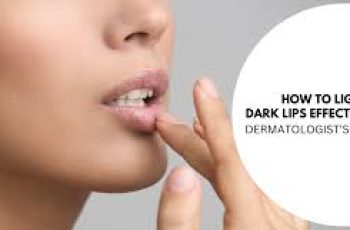
Can Azelaic Acid be used with Retin A?
When you layer powerful ingredients, it can sometimes feel like a wizard working in a bubbling cauldron. Especially when you go for the strongest, most potent ingredients like retinoic acid and azelaic acid, whose names really do sound like magic.
Our question: Can Azelaic Acid be used with Retin A? We’re going to dive into this question today, so stay tuned if you want to know the answer. But before we do, let’s quickly summarize what each ingredient can bring to the skin.
What are the benefits of Retinoic Acid?
Retinol A, a derivative of Vitamin A, is a popular ingredient in skincare products, often applied to the face in an effective topical formula. Here are the main benefits of using Retin A in your skin care routine.
Helps regulate oily and acne-prone skin types by controlling sebum production.
Targets areas of hyperpigmentation and dark spots, causing them to fade over time and become less noticeable on the skin’s surface.
Increases the rate of the skin’s cell cycle, ensuring that new skin cells appear on the outer surface, resulting in a brighter, more even, and smoother complexion.
Specialized to fight signs of skin aging like fine lines, wrinkles and loss of elasticity.
Due to the high potency of Retin A and its derivatives, you should be aware of some side effects which can lead to increased skin sensitivity and severe dryness. You also need to remember to use this powerful powerhouse in your evening routine, as Vitamin A is deactivated by UV radiation. If you want to learn more about Retin A, we at Beauty Insiders have published a series of blog posts on the subject.
What are the benefits of Azelaic Acid?
Derived from grains like wheat, rye and barley, Azelaic Acid is undoubtedly an unsung hero for the skin. This acid is often overshadowed by other popular ingredients, but it has many skin benefits such as:
Contains anti-inflammatory properties, which means it can reduce redness and rosacea.
It is rich in antibacterial properties, so it fights acne and breakouts, and clears pores clogged with excess sebum, bacteria and impurities.
Works on the outer surface of the skin to remove layers of dead skin cells, leaving skin radiant and healthy.
Targets areas of hyperpigmentation and dark spots for a brighter, more radiant complexion and an even-toned complexion.
As I mentioned before, azelaic acid certainly doesn’t fly under the radar when it comes to skincare ingredients. Even though it’s great for improving skin, it can take some time to work. This explains why professionals and dermatologists rarely prescribe it. However, that doesn’t mean you shouldn’t incorporate azelaic acid into your daily routine. There are many over-the-counter formulas that deliver results and are great for the skin. Learn more about this ingenious ingredient in our dedicated blog post.
Now that we’ve got some questions out of the way, let’s explore these two ingredients further and find out how to use them together most effectively.
Can Azelaic Acid and Retin A be used together?
In short: Yes, but only if you follow the application rules. What I mean by that is, you need to make sure you apply these active ingredients correctly to get the best results while avoiding unwanted side effects.
There are ways to use Retinol A and Azelaic A together, alternating between using each active ingredient in the evenings during the week. You can also choose to use Azelaic Acid in the morning and Retin A in the evenings for your skincare routine. You can also use both in the same routine, leaving 20 to 30 minutes between applications; just make sure your skin has built up tolerance before mixing the two ingredients. The short break between applications gives the skin enough time to balance pH and prepare for the next application. You can also combine these two powerful ingredients with other hydrating ingredients to lock moisture into the skin and keep the natural lipid barrier fully functional and healthy.
Do I use azelaic acid before or after retinol?
It depends on the product formula containing the active ingredient. What I mean is that a basic rule of skincare application is to apply skincare in order from thinnest to thickest. This ensures that each product can be fully absorbed into the skin without competing with the barrier of other thicker formulas.
You can often find azelaic acid and retinol A in similar products. For best results, I recommend using an exfoliating toner rich in azelaic acid, then a serum with hyaluronic acid, and finally another serum or moisturizer with retinol. Using these active ingredients at night allows each ingredient to do its job in the skin without interference from free radicals like pollution, UV rays, and other environmental influences.
Is Azelaic Acid Better Than Retin A?
I spent some time explaining how azelaic acid and retinol A work effectively together, but how do the benefits of these clever ingredients compare? The easiest way to determine which one is better for you and your skin is to consider these factors.
How sensitive your skin is and how likely it is to dry out
The choice of ingredients you use on a daily basis will largely depend on the sensitivity of your skin. For example, retinol is a known drying ingredient. So if your skin type is dry or reactive skin that gets irritated easily, you may be better off with azelaic acid.
Determine which skin concerns you want to treat
While azelaic acid and retinol have similar properties, such as: B. Antibacterial properties, retinol is known for its impressive ability to fight signs of aging like fine lines, wrinkles, and loss of elasticity. So if you want to treat aging skin, retinol is your best bet. Otherwise, you can use azelaic acid to fight acne, breakouts, or clogged pores.
Identify the root cause of the problem
If you want to find out the root cause of your problem, I recommend you consult a doctor, dermatologist or medical professional to examine each of these ingredients in more detail and find out which ones are good for your skin and which ones can cause more problems.
I hope I have answered some of your questions today about using azelaic acid and Retin A together. Don’t forget to visit us on Instagram for more skincare tips and if you have any additional questions, contact one of our skincare experts.


